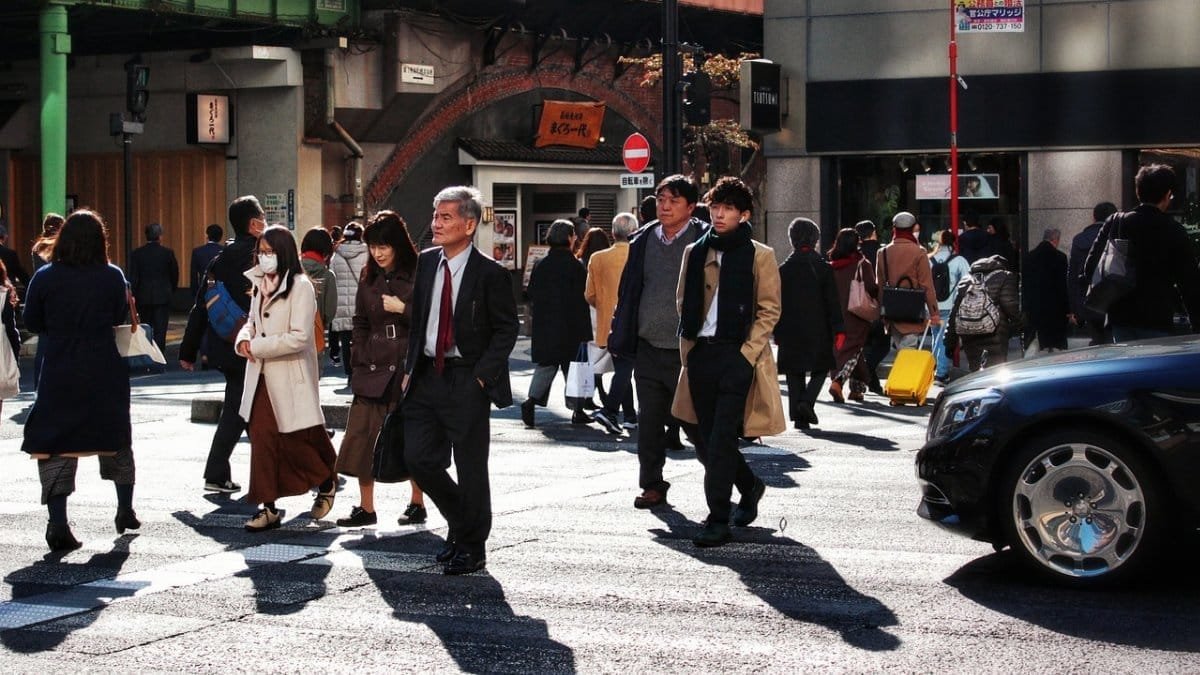It was a typical Tuesday morning when Mark found himself standing in the middle of a bustling New York City park. The air was crisp, almost refreshing. The usual city sounds played their symphony, maybe a bit louder than usual. But something unusual caught his eye—a small group of people, eyes closed, moving together with the rhythm of their breath. This wasn’t your typical yoga class. It was something deeper, something called breath-centered movement. He couldn’t help but wonder: why, in a city that never sleeps, were these people so still?
The Rise of Mindful Practices in Urban Life

In today’s fast-paced world, everyone seems to be searching for a way to slow down. The rise of mindfulness practices in urban settings has been remarkable, even surprising at times. Cities across the U.S. are buzzing with activities that boost mental well-being, like a wave rolling in. Breath-centered movement is popping up not just in wellness studios but in parks and community centers too. People are craving a moment of peace amidst the chaos. Perhaps it’s the need to unplug from the constant hum of city life—it’s hard to say—but these practices are clearly filling a gap.
Breathing Techniques Through History

Breathwork isn’t new. Ancient civilizations understood its power, almost like a secret they kept close. From the yogic traditions of India to meditative practices in China, breath has always been central. So why’s it making such a comeback in 2025 America? Maybe it’s our way of finding balance in a digital-heavy world. It could be the simplicity of it all that pulls us back—the idea that something so basic can carry such weight.
Why Breath Matters

At its heart, breath-centered movement is about tuning into the simplest, most powerful tool we’ve got—our breath. Studies from the National Institutes of Health show how breathing techniques can cut stress, sharpen focus, and lift overall health, like a natural remedy. No wonder people are drawn to it—maybe because it’s something you can do anywhere, anytime. Taking a deep breath can shift your whole day. It’s hard to say exactly why, but breath matters more than we often realize.
Field Notes from a Breath-Centered Class

Someone decided to give it a try themselves. The class kicked off with gentle movements, each tied to a breath. “Inhale and reach. Exhale and fold,” the instructor said, calm as can be, like a mantra. The room was quiet, save for the sound of everyone breathing together—maybe a little eerie, but peaceful. “I thought it was odd at first,” one person said after, “but I felt lighter.” The simplicity of it, the focus on breath, can really change how you see things. Then there’s Lisa, who shared her story with me. She joined a class in her local park, skeptical at first. After a few sessions, though, she was hooked—bringing friends along, turning it into her weekly unwind. These classes aren’t just about breathing; they’re about building something together, a little community.
From Yoga Mats to Office Chairs

Breath-centered movement isn’t stuck in yoga studios. It’s creeping into corporate America, like a fresh trend. Companies are weaving short breathwork breaks into the workday, perhaps to help folks handle stress. It’s a way to lift productivity and keep people feeling good. A calm mind stays sharp—it’s hard to say exactly how it works, but a few minutes of breathing can make a real difference in the office. The simplicity might be what makes it click, and it’s clear it’s becoming part of the workplace vibe.
Scientific Backing for Breathwork

Harvard Health Publishing points out the benefits of controlled breathing—lower blood pressure, better brain function, like a magic fix. It’s a practice backed by science, winning over even the skeptics. When the data’s there, it’s easier to buy in. The real results might be what’s convincing people to give it a shot—it’s more than just a passing fad.
The Cultural Shift Towards Self-Care

There’s a bigger shift happening as we roll deeper into 2025. Self-care’s picking up steam, like a wave we can’t ignore. “Me time” isn’t a treat anymore—it’s a must, maybe because the pressure’s on for all of us. Breath-centered movement fits right in, offering a quick, easy way to recharge. A few minutes focusing on your breath can change a lot. It’s hard to pin down why, but the appeal of something so simple is clear. Self-care’s not going anywhere.
Community and Connection

Here’s the interesting part: breath-centered movement is personal, but it’s also bringing people together. Groups meet up in parks, community centers, even online, like a new kind of hangout. It’s about connection, even if it’s quiet and synced through breaths. Maybe we’re all just craving a sense of belonging. These practices tie people together in a unique way—the shared silence might be what makes it so strong.
Breath-Centered Movement in Popular Culture

It’s popping up everywhere lately. TV shows slip in breathwork scenes, influencers push daily practices—like it’s the latest thing. Breath-centered movement is turning into a cultural marker, maybe because it’s so easy to relate to. It’s moving out of the niche and into the spotlight. Seeing it on your screen or hearing about it from someone you follow makes you curious to try it. The visibility’s probably fueling the buzz—it’s becoming part of the fabric now.
A Personal Journey

Someone’s own dip into breath-centered movement was a wake-up call. It’s tough to put into words, but it matters—like a quiet revelation. Pausing to breathe, to just be, feels bold in a world that never stops. Maybe that’s why so many are drawn to it. Finding a slice of peace in the storm can change everything.
Final Thoughts

Breath-centered movement is more than a trend—it’s an answer to the grind of modern life. Looking ahead, it’s easy to see this practice sticking around, growing like a quiet movement. It’s a refuge for anyone chasing calm in the chaos, maybe because it’s so within reach. A few minutes with your breath can shift a lot—it’s hard to say exactly why, but its staying power is clear. The simplicity might just be its strength.
Related Post: Why Sound Therapy Increases Mindfulness
